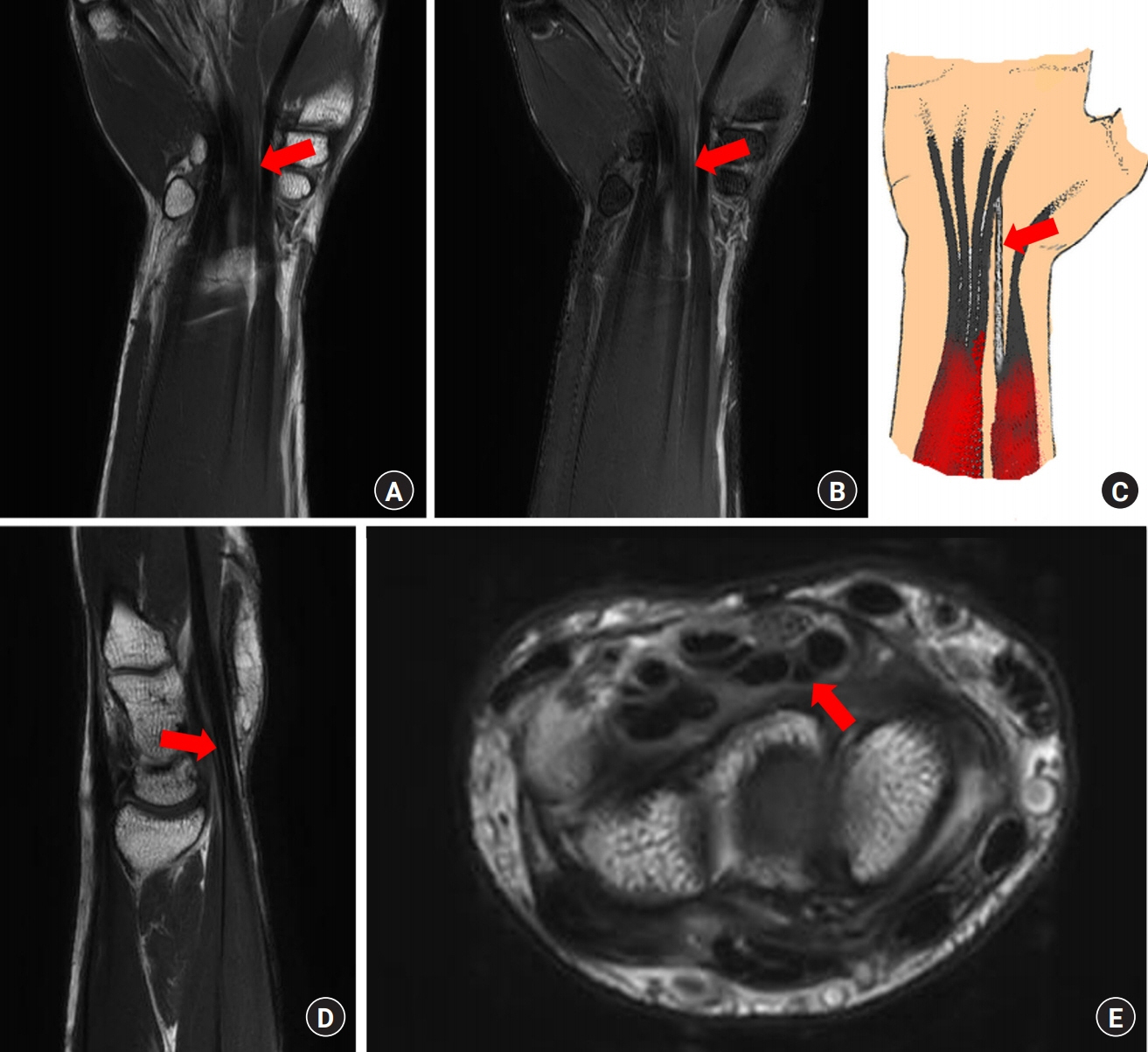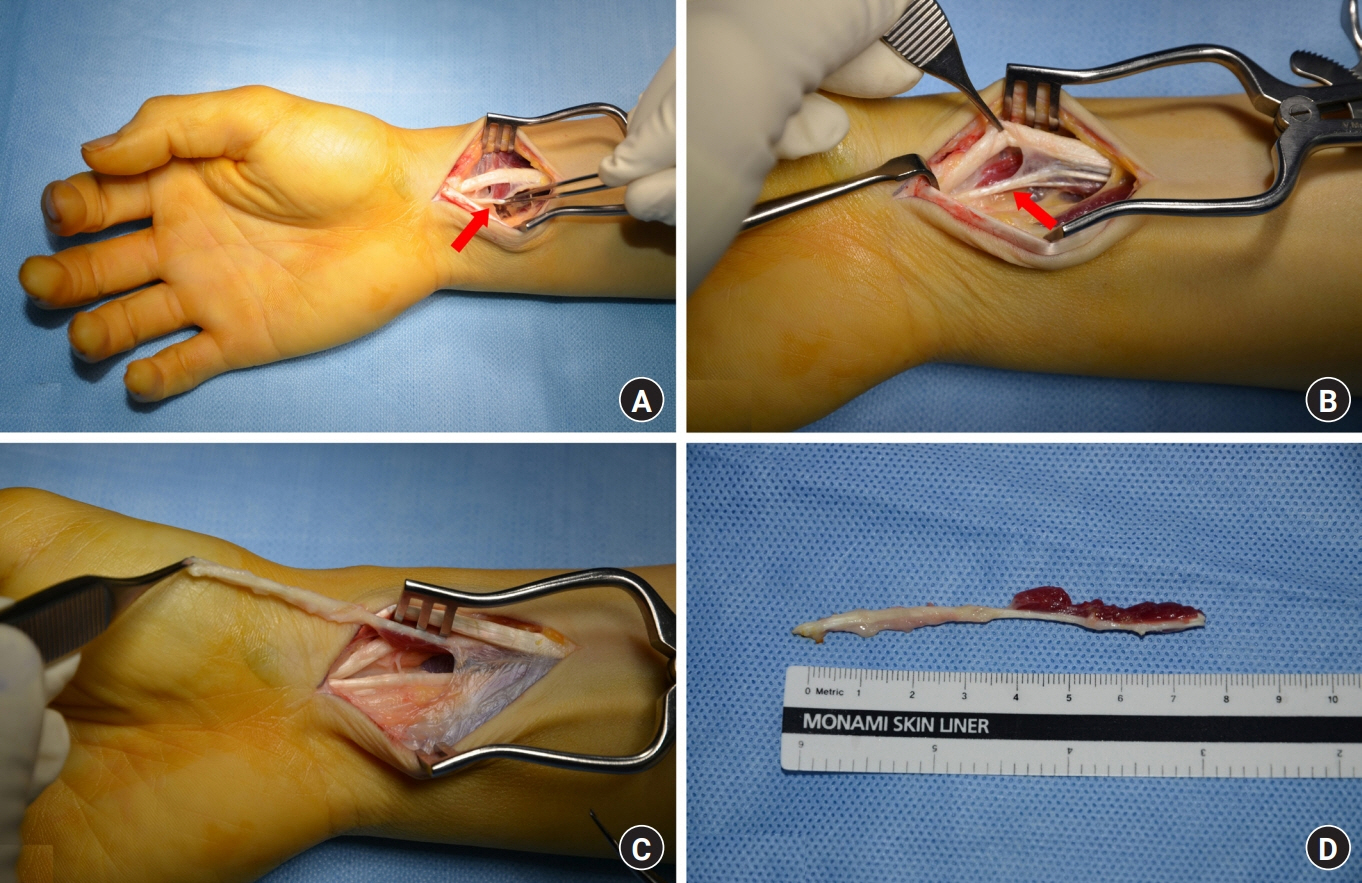Arch Hand Microsurg.
2023 Dec;28(4):275-280. 10.12790/ahm.23.0035.
Linburg-Comstock syndrome: a case report and review of the literature
- Affiliations
-
- 1Department of Orthopaedic Surgery, CHA Bundang Medical Center, CHA University School of Medicine
- KMID: 2548599
- DOI: http://doi.org/10.12790/ahm.23.0035
Abstract
- In 1979, Linburg and Comstock reported a lesion that interfered with the independent flexion of the fingers due to an abnormal connection between the flexor pollicis longus and the tendon of the flexor digitorum profundus to the index finger. This entity can cause discomfort in daily life when functionally delicate finger use is required; therefore, surgical treatment is sometimes recommended depending on the symptoms. The authors performed surgical treatment for a patient who visited our outpatient clinic seeking functional improvement for congenital symptoms of simultaneous thumb and index finger flexion and obtained satisfactory results. Reports of surgical treatment for Linburg-Comstock syndrome are rare in Korea, so the authors report this experience, along with a review of the literature.
Keyword
Figure
Reference
-
References
1. Linburg RM, Comstock BE. Anomalous tendon slips from the flexor pollicis longus to the flexor digitorum profundus. J Hand Surg Am. 1979; 4:79–83.
Article2. Gancarczyk SM, Strauch RJ. Linburg-Comstock anomaly. J Hand Surg Am. 2014; 39:1620–2.
Article3. Badhe S, Lynch J, Thorpe SK, Bainbridge LC. Operative treatment of Linburg-Comstock syndrome. J Bone Joint Surg Br. 2010; 92:1278–81.
Article4. Furukawa K, Menuki K, Sakai A, Oshige T, Nakamura T. Linburg-Comstock syndrome: a case report. Hand Surg. 2012; 17:217–20.
Article5. Miller G, Peck F, Brain A, Watson S. Musculotendinous anomalies in musician and nonmusician hands. Plast Reconstr Surg. 2003; 112:1815–24.
Article6. Slater RR. Flexor tendon anomalies in a patient with carpal tunnel syndrome. J Hand Surg Br. 2001; 26:373–6.
Article7. Karalezli N, Haykir R, Karakose S, Yildirim S. Magnetic resonance imaging in Linburg-Comstock anomaly. Acta Radiol. 2006; 47:366–8.
Article8. Barabás AG. Flexor pollicis longus tendon repair in patients with Linburg-Comstock anomaly. J Hand Surg Eur Vol. 2013; 38:203–4.
Article9. Chung DW, Han CS, Hwang JC. Linburg-Comstock syndrome: a case report. J Korean Soc Surg Hand. 2008; 13:122–4.10. Yoon HK, Kim CH. Linburg-Comstock syndrome involving four fingers: a case report and review of the literature. J Plast Reconstr Aesthet Surg. 2013; 66:1291–4.
Article
- Full Text Links
- Actions
-
Cited
- CITED
-
- Close
- Share
- Similar articles
-
- Flexor Pollicis Longus Reconstruction in Patient with the Linburg-Comstock Syndrome
- A Case of Chronic Fatigue Syndrome: Case Report & Literature Review
- Nevoid Basal Cell Carcinoma Syndrome: A Case Report and Literature Review
- Apet's Syndrome (Acrocephalosyndactyly. Report of A case)
- Classical Type Ehlers-Danlos Syndrome: Report of a Case and Review of Literature





